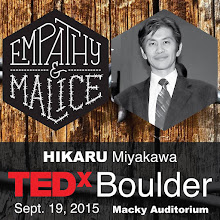
[Why is the Pagan, "The School of Athens" fresco relevant in the Vatican?(part 3)]
In a blog, I have to limit myself to write the short version of the same thing I would have if I were to write a book. I may be, therefore, accused of over simplification.
Let us ponder about the common denominator among the three: Apelles, Heraclitus, and the goddess Diana (Artemis).
They all have something to do with Ephesus. A great temple of Diana/Artemis in Ephesus, one of the 7 wonders of the world, was rebuilt many times, once after the flood, and again after being burnt by Herostratus, and after being destroyed by Goths, and so on.
One of the curious characteristics of the statue has to do with the lady having the multiple breasts. One reason could be that she was there to feed and to nurture the hungry (souls).
Apelles, the legendary painter, had first studied with the teacher, Ephorus of Ephesus. The legend has that his portrait painting of Alexander the Great was at the temple of Diana.
Heraclitus, a pre-Socratic philosopher known for the idea of the union of the opposite, Logos, and the eternal fire, was a native of Ephesus, although he being a aristocratic decent, hated the common people of Ephesus. He also had said : "To God all things are beautiful, good, and right. Men, on the other hand, deem some things right and others wrong."
(citation: http://community.middlebury.edu/~harris/Philosophy/Heraclitus.html)
Now let us "baptize" these elements.
It is interesting to note that the above quote reminds us of Genesis, where Elohim, after examining the creation, proclaim(s) that it is good, and later, Adam and Eve eat the fruit from the Knowledge of Good and Evil (right and wrong).
Heraclitus spoke of Logos and the fire as the essential element. Logos is mentioned and understood differently by the different philosophers, but it was later equated as Christos/Christ, and there is the mentioning of the baptism by the fire in Matthew 3:11. In Matthew 3:11, John the Baptist spoke of a being who will baptize everyone with the Holy Spirit( Πνεύματι Ἁγίῳ ) and the fire. In John 14:16-17, the Holy Spirit as the comforter (παράκλητον /parakleton) is mentioned by Jesus. Later, at the Pentecost, the tongues of fire also appears to the disciples.
Finally, let us contemplate about Diana. In Christianity, the figure of Charity is often breast feeding the ones in need, but if we look again at the image, Diana is not the one who is sitting on the throne. The throne itself has the two images of Diana. This lady who sits on such throne is Sophia, a being of Wisdom, similar yet different from Athena-Minerva.
It is interesting to know that when the temple of Diana was destroyed for the last time by the Christians, the remnants from the temple were actually used in Constantinople and especially for the columns for Hagia Sophia, the great Byzantine Church! (http://en.wikipedia.org/wiki/Temple_of_Artemis )
The name "Hagia Sophia" means the "Holy Wisdom"; therefore, from such point of view, this lady in the ceiling tondo may represents, not only the pre-Christian Greek wisdom, but the Baptized Wisdom as well, especially of the Eastern (Greek Orthodox/Byzantine)Churches.
(It is also interesting to note that in 1453, Constantinople fell to the invasion by Ottoman Empire, and the flood of the Greek refugees came to "Italy", so perhaps, this fresco may be paying homages to the brother Empire, although the Byzantine Empire and the Roman Catholic "empire" were not necessary friendly towards each other during the Middle Ages.)
So, this fresco of "The School of Athens" along with the "Philo-Sophia" tondo on the ceiling represents the elements that were sort of the prefiguration of Christianity, thus relevant in the Vatican.








